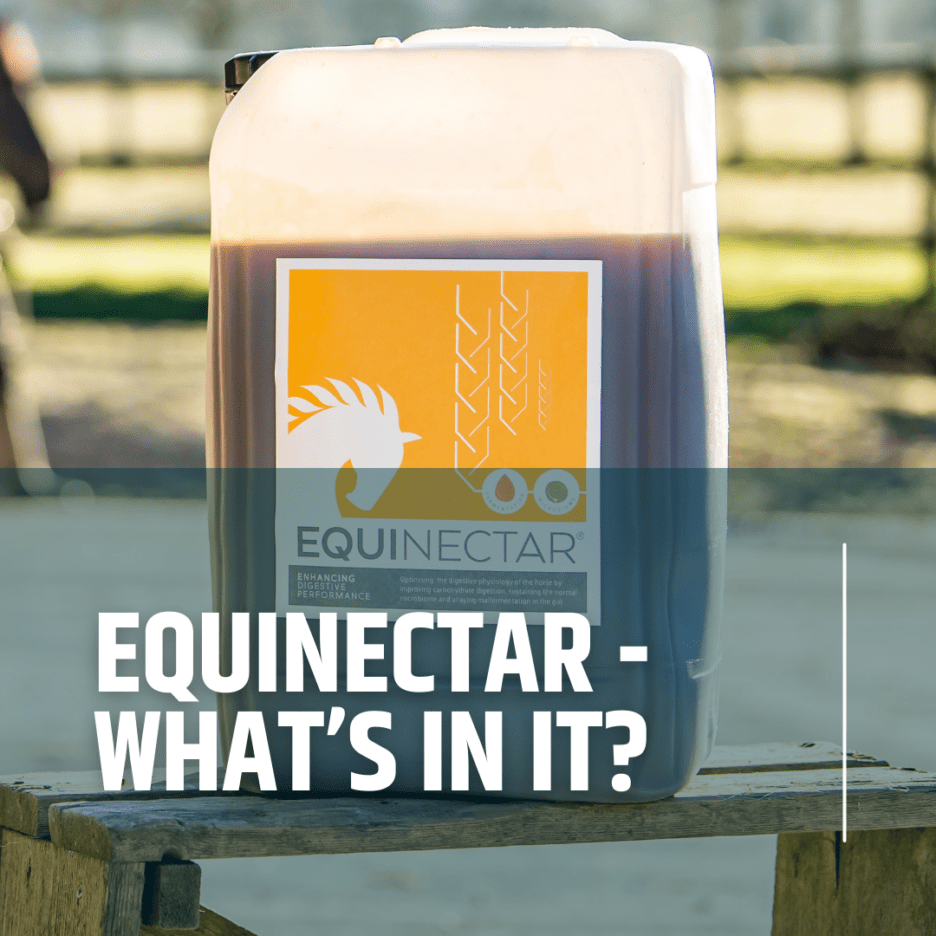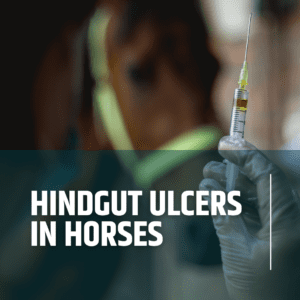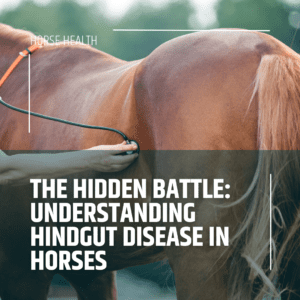
01
Ingredients
EquiNectar is a carefully formulated supplement designed to support equine digestive health and overall wellbeing. It contains three main ingredients:
- Our patented enzyme-rich malt extract: This is the cornerstone of EquiNectar. It's produced especially for us, by sourcing particular strains of barley, malting them and then using a special low-temperature process to preserve the enzymes naturally found in barley malt. This process ensures that the beneficial enzymes remain active, providing maximum nutritional benefit to your horse [1]. (watch a short video on the manufacturing of EquiNectar)
- MCT oil: Medium-chain triglyceride oil is a type of easily digestible fat. MCTs are rapidly absorbed and metabolised, providing a quick source of energy. They've been shown to have potential benefits for metabolic health and may support the immune system [2].
- Potassium sorbate: This is a common food preservative used to maintain freshness and extend shelf life. It's safe for consumption and helps ensure that EquiNectar remains stable and effective over time [3].
02
Enzymes within EquiNectar
The enzyme profile of EquiNectar is one of its key features. These enzymes play crucial roles in breaking down various components of your horse's diet, potentially improving digestion and nutrient absorption. The main enzymes in EquiNectar include:
- Amylase: This enzyme helps break down starches into simpler sugars. In horses, which have evolved to digest primarily forage, additional amylase can assist in the digestion of grain-based feeds [4].
- Fructanase: This enzyme assists in breaking down fructans, a type of complex sugar found in many types of forage. High levels of fructans can sometimes cause digestive upset in horses, so fructanase may help mitigate this issue [5].
- Phytase: Phytase helps release nutrients, particularly phosphorus, that are bound by phytic acid in plant-based feeds. This can improve the overall nutrient availability from the diet [6].
- Xylanase: This enzyme aids in breaking down plant cell walls, specifically targeting a component called xylan. By doing so, it can help release nutrients that would otherwise be inaccessible [7].
- Cellulase: Cellulase breaks down cellulose, a major component of plant matter and a significant part of a horse's natural diet. Whilst horses produce some cellulase through microbial fermentation in their hindgut, additional cellulase may support more efficient digestion [8].
- Beta-glucanase: This enzyme assists in breaking down beta-glucans, which are found in grains like barley and oats. Beta-glucans can increase digesta viscosity, so breaking them down may improve overall digestion [9].
These enzymes work synergistically to support efficient digestion of various components in your horse's diet, potentially leading to better nutrient utilisation and digestive health.
03
What is malt extract? History and benefits to nutrition
Malt extract, the primary ingredient in EquiNectar, has a rich history and an impressive nutritional profile. Its use dates back to ancient Egypt, where it was valued not just as a food, but for its nutritional and medicinal properties [10].
The process of malting involves germinating barley grains under controlled conditions. This activation process triggers enzymes within the grain, which begin to break down complex starches into simpler carbohydrates. The result is a nutrient-rich substance that offers more than just energy [11].
Nutritionally, malt extract is a complex food with a range of beneficial components:
- Carbohydrates: Whilst plain malt extract typically contains about 90% carbohydrates (mostly in the form of maltose), EquiNectar is specially formulated to contain 65% carbohydrates. These provide a source of energy and serve as a substrate for beneficial gut bacteria. The lower carbohydrate content in EquiNectar allows for a more balanced nutritional profile [12].
- B vitamins: Malt extract is an excellent source of B vitamins, including:
- Thiamine (B1): Important for energy metabolism and nervous system function
- Riboflavin (B2): Crucial for cellular function and metabolism
- Niacin (B3): Supports energy production and DNA repair
- Pantothenic acid (B5): Essential for fatty acid synthesis and energy production
- Pyridoxine (B6): Important for protein metabolism and red blood cell formation
- Folate (B9): Crucial for DNA synthesis and cell division
- Vitamin B12: Supports nerve function and red blood cell formation These vitamins play vital roles in energy metabolism, nervous system function, and overall cellular health [13].
- Amino acids: Malt extract contains a spectrum of amino acids, the building blocks of proteins. These include both essential amino acids (which must be obtained from the diet) and non-essential amino acids. Amino acids are crucial for various bodily functions, including muscle maintenance, enzyme production, and tissue repair [14].
- Minerals: Key minerals found in malt extract include:
- Magnesium: Important for muscle and nerve function, as well as bone health
- Potassium: Crucial for heart function, fluid balance, and muscle contractions
- Selenium: An antioxidant mineral that supports immune function
- Zinc: Important for immune function, wound healing, and DNA synthesis
- Iron: Essential for oxygen transport in the blood and energy production These minerals play diverse roles in maintaining overall health and bodily functions [15].
- Phenolic compounds: Malt extract is rich in various phenolic compounds, which have potent antioxidant properties. These include:
- Ferulic acid: A potent antioxidant that may have anti-inflammatory effects
- Flavan-3-ols: Including catechins and epicatechins, known for their antioxidant activities
- Other phenolic acids: Such as vanillic acid, p-coumaric acid, and syringic acid. These compounds contribute significantly to the antioxidant capacity of malt extract [16].
Research has demonstrated that malt extract has significant antioxidant activity, both in laboratory tests (in vitro) and in animal studies (in vivo). This antioxidant capacity, primarily derived from its phenolic compounds, may help support overall health by combating oxidative stress [17].
A study by Phillips et al. showed that substituting refined sugars with antioxidant-rich alternatives like malt extract could significantly increase daily antioxidant intake. They calculated that this substitution could provide an antioxidant increase equivalent to consuming a serving of berries or nuts [18]. This suggests that malt extract could be a nutritious alternative to refined sugars in the diet.
Moreover, malt extract has been shown to have prebiotic properties, meaning it can support the growth of beneficial gut bacteria. This could have positive implications for digestive health and overall wellbeing [19].
04
Conclusion
EquiNectar represents a novel approach in equine nutrition, integrating enzyme technology with traditional malt extract benefits. This formulation addresses several key aspects of equine digestive physiology, potentially enhancing nutrient utilisation and supporting gastrointestinal health.
The enzyme profile of EquiNectar, particularly its amylase and fructanase content, may assist in the breakdown of non-structural carbohydrates, an area of increasing interest in equine nutrition research. Furthermore, the antioxidant properties of the malt extract components could have implications for cellular health and oxidative stress management, though further in vivo studies would be valuable to quantify these effects in horses.
As equine nutritional science evolves, there is growing recognition of the complex interplay between diet, gut microbiome, and overall health. Products like EquiNectar, which aim to support digestive processes, may play a role in maintaining this delicate balance.
References
[1] J. A. Delcour and R. C. Hoseney, "Principles of Cereal Science and Technology," AACC International, 2010.
[2] M. D. Mumme and W. T. Stonehouse, "Effects of medium-chain triglycerides on weight loss and body composition: a meta-analysis of randomized controlled trials," J. Acad. Nutr. Diet., vol. 115, no. 2, pp. 249-263, 2015.
[3] E. J. Pyler and L. A. Gorton, "Baking Science & Technology," Sosland Publishing, 2008.
[4] J. D. Pagan, "Carbohydrates in equine nutrition," Kentucky Equine Research, Inc., 1998.
[5] A. D. Ellis and J. Hill, "Nutritional Physiology of the Horse," Nottingham University Press, 2005.
[6] P. H. Selle and V. Ravindran, "Microbial phytase in poultry nutrition," Anim. Feed Sci. Technol., vol. 135, no. 1-2, pp. 1-41, 2007.
[7] L. R. Bedford and G. G. Partridge, "Enzymes in Farm Animal Nutrition," CABI Publishing, 2010.
[8] J. L. Julliand et al., "Characterization of the equine microbial ecosystem," Anim. Feed Sci. Technol., vol. 178, no. 1-2, pp. 1-9, 2012.
[9] B. A. Rowe et al., "Effect of β-glucan supplementation on the physiological responses of horses to repeated bouts of exercise," J. Equine Vet. Sci., vol. 34, no. 11-12, pp. 1316-1321, 2014.
[10] I. S. Hornsey, "A History of Beer and Brewing," Royal Society of Chemistry, 2003.
[11] D. E. Briggs, "Malts and Malting," Springer Science & Business Media, 1998.
[12] C. W. Bamforth, "Brewing Materials and Processes," Academic Press, 2016.
[13] J. Zempleni et al., "Handbook of Vitamins," CRC Press, 2013.
[14] G. Wu, "Amino acids: biochemistry and nutrition," CRC Press, 2013.
[15] J. J. Strain and K. D. Cashman, "Minerals and Trace Elements," Wiley-Blackwell, 2009.
[16] M. Dvořáková et al., "Characterization of malt extract phenolic acids by HPLC with different detection methods," J. Inst. Brew., vol. 114, no. 4, pp. 275-281, 2008.
[17] Y. Qingming et al., "Antioxidant activities of malt extract from barley (Hordeum vulgare L.) toward various oxidative stress in vitro and in vivo," Food Chem., vol. 118, no. 1, pp. 84-89, 2010.
[18] K. M. Phillips et al., "Total antioxidant content of alternatives to refined sugar," J. Am. Diet. Assoc., vol. 109, no. 1, pp. 64-71, 2009.
[19] G. R. Gibson and M. B. Roberfroid, "Dietary modulation of the human colonic microbiota: introducing the concept of prebiotics," J. Nutr., vol. 125, no. 6, pp. 1401-1412, 1995.
[20] C. J. Proudman et al., "Characterisation of the faecal metabolome and microbiome of Thoroughbred racehorses," Equine Vet. J., vol. 47, no. 5, pp. 580-586, 2015.
[21] N. Richards et al., "Examination of the use of exogenous α-amylase and amyloglucosidase to enhance starch digestion in the small intestine of the horse," Anim. Feed Sci. Technol., vol. 114, no. 1-4, pp. 295-305, 2004.
[22] International Organization for Standardization, "ISO 9001:2015 Quality management systems — Requirements," 2015.
[23] British Equestrian Trade Association, "BETA NOPS Code," 2020.
[24] National Research Council, "Nutrient Requirements of Horses: Sixth Revised Edition," The National Academies Press, 2007.
[25] K. L. Snalune et al., "Modulation of the equine microbiome by pasture and feed supplements: A metabolomics approach," Integr. Food, Nutr. Metab., vol. 6, no. 1, pp. 1-4, 2019.




